This craft beer marketing “playbook” comes from an alternative perspective. Not colored by any “pet” theory or approach, it’s instead a collection of observations from the front lines. Welcome to our ultimate guide to craft beer marketing for breweries.
What are the best craft beer breweries in the business doing for marketing and what can we learn from it?
And because our focus is on finance, growth, and profit for the brewer, not only is it our duty to provide guidance on key strategic functions within breweries that are inextricably tied to the top and bottom line, I’d argue we’re uniquely positioned to do so.
It’s just:
Can it be done?
Does it move the needle?
Is it good for the business?
And because we’re constantly scanning the horizon, with objective judgement, for the best of the best practices when it comes to craft beer marketing, our interactions with clients and members of our community provide the perfect forum to give, receive, and discuss this type of guidance.
That includes marketing.
Here’s our ultimate guide to craft beer marketing:
Section 1: What we don’t mean by “Digital Marketing” for Breweries
Section 2: The Foundational F’s of Marketing Craft Beer: Frequency and Followers
Section 3: The Two C’s of Brewery Marketing: Creative and Context
Section 4: The Big E for Breweries: Engagement
Section 5: The Silent S’s: Social Proof, Scarcity, and Storytelling
Preamble over. Let’s dig in.
What we don’t mean by “Digital Marketing” for Breweries
Let’s start off first with what we’re not talking about here.
“Digital marketing” is a term that’s been co-opted and warped by marketers, consultants, and the media as a fluffy, empty buzzword. Thick on the tips, tropes, advice, and anecdotes… and thin on actual substance and results.
But let’s not throw out the baby with the bath water… because as some of the most successful breweries out there will attest, “craft beer marketing” and “digital marketing” are, in reality, one and the same.
Case in point: our to-go sales research identified “digital marketing effectiveness” as the biggest differentiator between the breweries who were able to best adapt to the new market conditions during the COVID-19 shutdown, and replace taproom revenue with increased packaged sales.
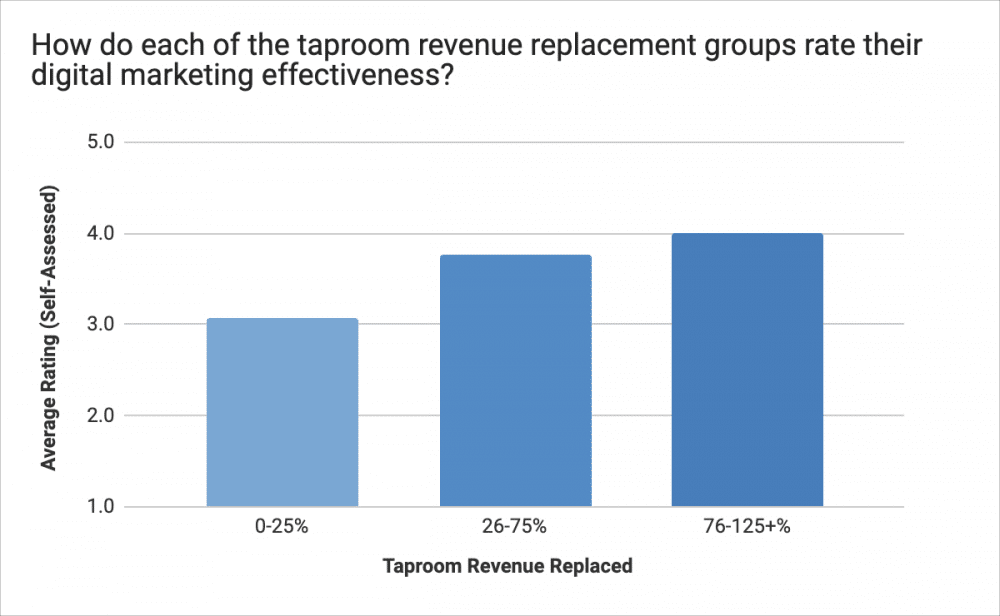
And it has been a recurring theme in the advisory component of the service we provide.
Here’s what we don’t see as effective when it comes to craft beer marketing:
- Checking the boxes. Plopping an admin down in front of a laptop with “social media” in their job description. Outsourcing to an agency: out of sight, out of mind. You may be checking all the boxes, but checking the boxes is not enough. Publishing X posts per week on Facebook, Instagram, Twitter. Clicking send on the obligatory, yet self-serving weekly newsletter. These are the “motions” that you go through… but do not constitute “marketing” in and of themselves.
- Tactics, tactics, tactics. Focusing on the tactics… the latest greatest filters, hashtags, SMS platform… will lead you down the road to a full feed with a few likes here and there. But again, those aren’t the things that move the needle… they’re just a new distraction we can chase instead of doing the hard work of figuring out what really works.
- Metrics, metrics, metrics. There’s ultimately only one metric that matters… Can we drive revenue? And one of the biggest problems with “digital” is that you can measure a whole bunch of shit that bears no relation to the desired end result. Likes, followers, clicks and comments are all “nice” to look at. But we need to be constantly, ruthlessly focused on the real goal. Just because it’s digital doesn’t mean we should get away from what we know really works: communicating with our audience in a way that garners attention, builds trust, and creates successful relationships and long-term, repeat buyers.
So instead of jumping to, “Get on social!” We need to take a step back, breath, and ask ourselves first: What are we trying to get out of all of this?
Sales, engagement, community, a direct line of communication with our customers that we can use to maintain that experience they get in the taproom, even when they’re at home on the couch.
So you may have that slot filled…
You may have the accounts set up…
You may have the product photography and the posts going out…
But I want to start out by having you ask yourself and your team:
How can we make digital an extension of the business rather than a checkbox-riddled, siloed function we can outsource to the next Millennial that walks through the door?
We’ve got some answers.
The Foundational F’s of Marketing Craft Beer: Frequency and Followers
Frequency and followers are the basic, essential building blocks of marketing for breweries.
No content, no results.
No followers, no results.
We won’t spend much time here because stating the obvious is unseemly and makes this look like B.S. internet article 1,723 about “Secret Social Media Tips to Make 2020 Your Most Awesomest Year Yet!”
But I’ll say again what I always do:
If you’re holding back on frequency, you’re leaving money on the table.
So get it out of your head that you’re “annoying” people and commit to putting out the good stuff, day-in, day-out.
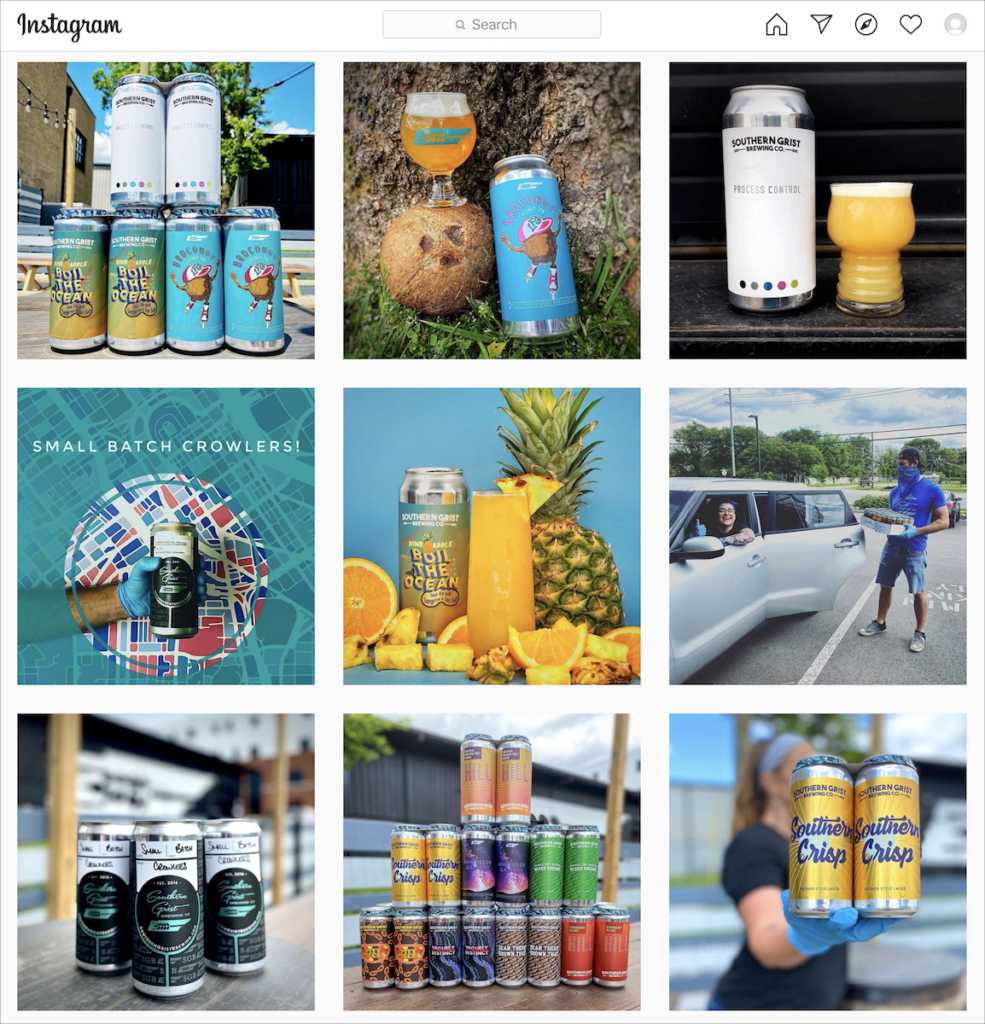
As a rough set of guidelines for craft beer marketing:
- 1-2 posts per day on Facebook is the sweet spot. Above 3 and you’ll start to see a pretty significant dropoff. Stack a FB Live session or two on top of that to top it off, and make the algorithm work in your favor.
- 1-2 posts per day on Instagram. Folks expect to see the daily product photo. That second post is your opportunity for storytelling (see below). More than that and you’ll quickly become Insta-uninteresting (I’m a dad. Dad jokes are my currency).
- On Twitter… who the F knows. Go crazy. At a minimum map to your FB and Instagram frequency.
- Sending 1 email to your list each week is standard for breweries. Shoot for two if you’re an overachiever. So go. Be that overachiever, so long as it’s not a rehashing of the same shit you wrote about earlier in the week.
- Use SMS sparingly, as a secret urgency-creation weapon. Primarily for limited-quantity, or limited-time releases (see Scarcity below). People respect the alert when it means something… and find it insanely distasteful and annoying when it doesn’t.
Why this schedule?
This baseline frequency ensures maximum exposure among the audience you currently have… in addition to making the social media gods happy and attracting more followers over time.
Speaking of followers:
Obviously the more followers and subscribers the better…
But quality matters, too.
So what we’re looking for here is not just a total count but a count of qualified, engaged followers that read and respond to the content that you produce.
The back-of-the-napkin looks something like this:
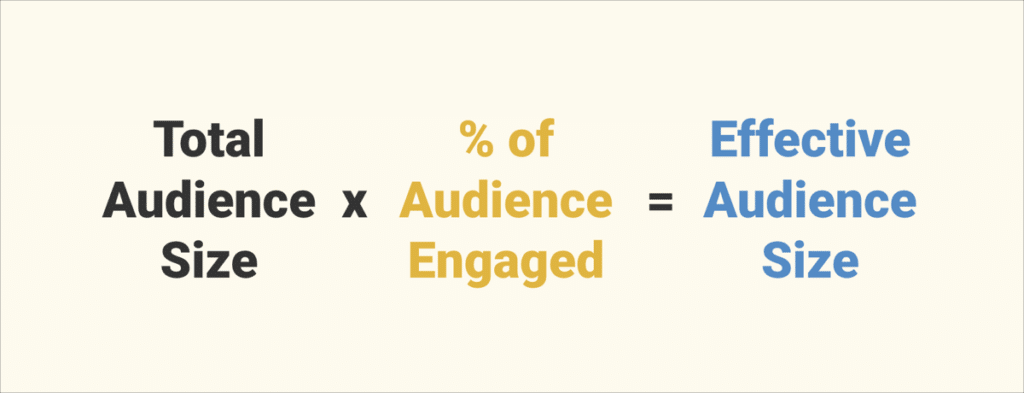
How do you maximize your Effective Audience Size as a brewery?
- Grow your Total Audience Size through frequency and engagement (see below).
- Increase your % of Audience Engaged with more impactful content (also see below).
Let’s go deeper down the rabbit hole.
The Two C’s of Brewery Marketing: Creative and Context
Now we get into some serious Don Draper territory.
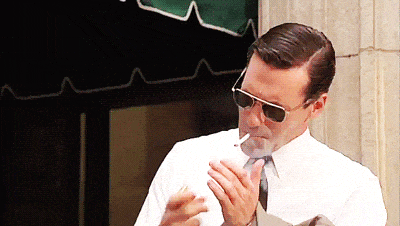
Because here at Skill Level 2 we recognize that any kid down the street with half a brain can post “stuff” and press send in MailChimp.
But what really moves the needle for your brewery is the little marketing-bomb you put into each piece of content that goes out.
The First C: Creative
So what do we mean by creative?
It’s the actual photography and design that goes into the images you put out… and the copywriting that’s paired with it.
Our objectives:
- Grab attention. Get them to stop thumb-scrolling… for at least a second.
- Convert that attention into action. A.k.a. get people to purchase your product.
- Cement your brand in the mind of your audience. However you want to be perceived by the marketplace needs to consistently come through in the creative you put out.
The primary means of doing this is to simply let your product tell the story.
Don’t “bury the lead” as they say.
Bring the good stuff front and center.
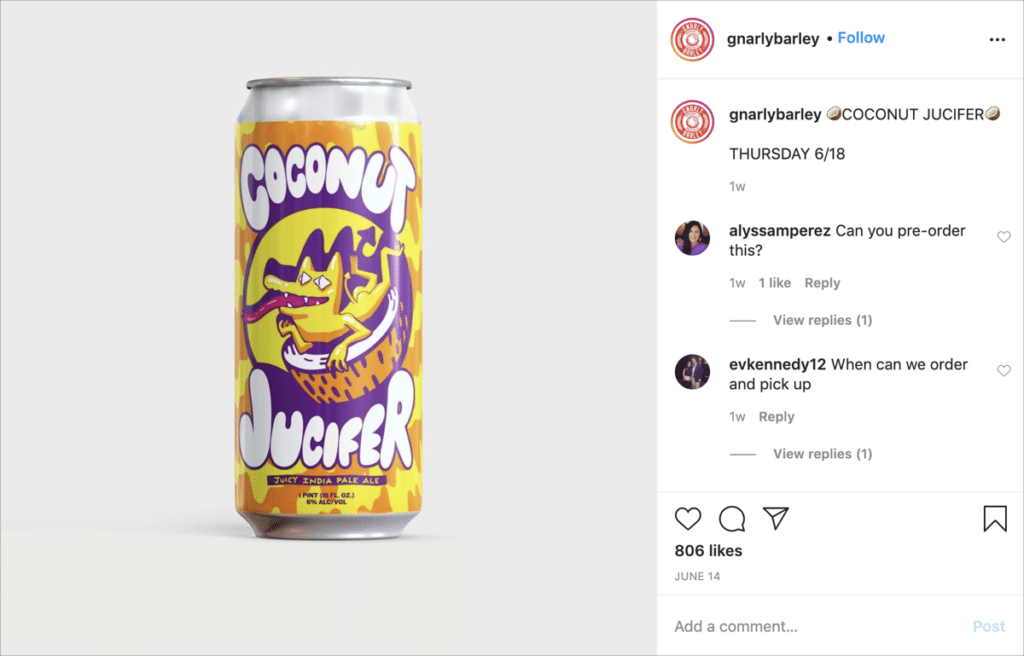
But while photos are “nice” the real action happens when you provide people with a pathway to the purchase.
This is where the dark art skill of masterful copywriting comes into play. Because once you’ve used that sexy can art to create a window of opportunity…
It’s those few, well-placed lines of copy that do the job of converting that attention into the action you want that person to take.
And you need to make it abundantly clear what that action should be. A simple AIDA framework (Attention, Interest, Desire, Action) is a tried and true place to start.
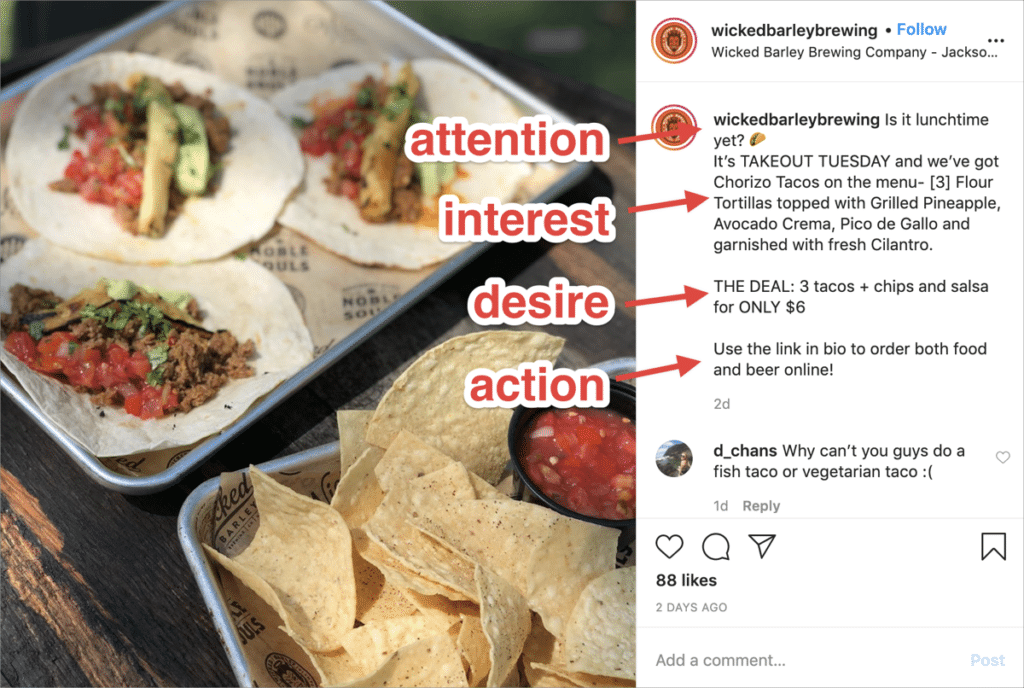
When the rubber hits the road though, we have The Second C to keep in mind…
The Second C: Context
Each marketing platform has a different “mechanism” on which it operates.
So to further maximize results…
Everything you put out needs to also match the context in which the content will be consumed.
Beyond each piece of content corresponding to a product, a release, an event… a different (and sometimes significantly different) set of creative requirements are needed across Facebook, Instagram, Twitter, email, SMS.
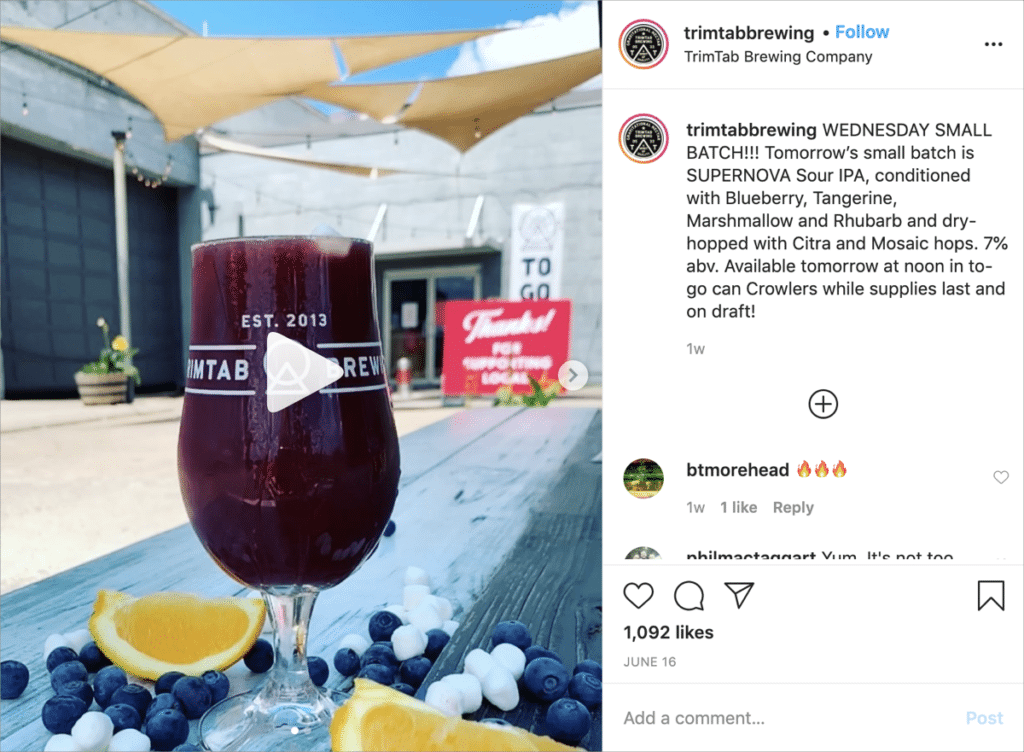
Not only are the platforms themselves very good at de-prioritizing and hiding content from your followers’ feed if it doesn’t map to their preferred format…
Your followers themselves have sophisticated thumb-scrolling B.S. detectors and can tell when you’ve punted and duplicated something created natively for Facebook over to Insta, or vice versa.
It can work, but you’re leaving eyeballs and interaction of the table.
The moral of the story here:
If you’ve gone through all of the trouble to craft a gorgeous product photo, and wordsmith a few lines of enticing copy that grabs and converts attention…
It’s worth your while to put in the effort in that last mile to optimize it for each platform individually to maximize your chances of getting that post seen or that email read.
Once you hit publish though, the job ain’t done.
The Big E for Breweries: Engagement
Here we make our move from Don Draper into Garyvee’s neighborhood…
And as much as you claim to hate on the “hustle porn” he puts out, you know deep down (annoyingly so) that he’s right about this:
Engagement matters as much as the actual content itself.
Now, this doesn’t mean we have to spend the 10-hours-a-day grind-a-thon he so abrasively describes:
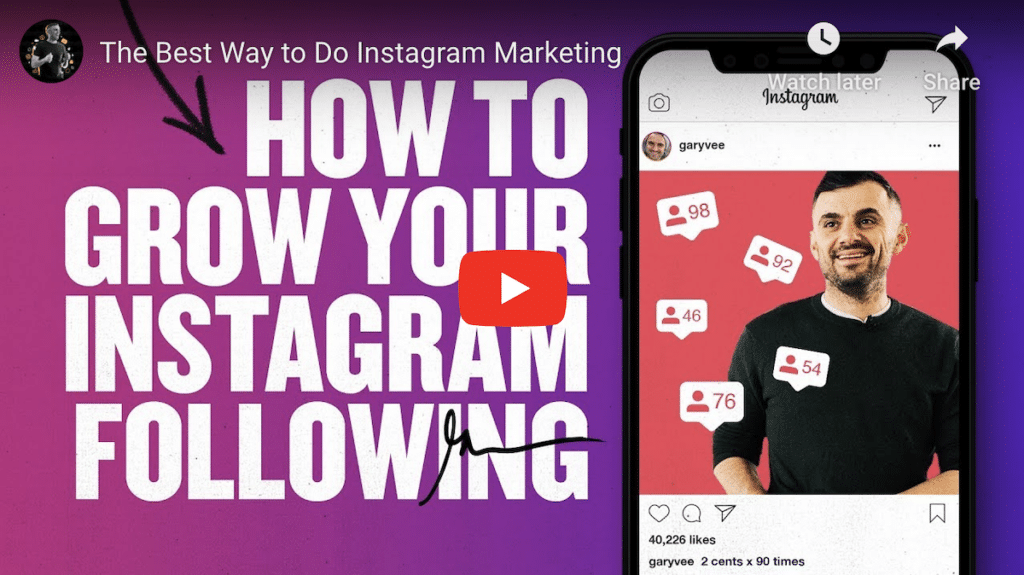
But what we do need to do is ensure we’re getting maximum mileage out of everything that goes out.
After all, if the objective is to communicate with our audience and build interest in what we’re selling… we want to keep that conversation going. And it’s not a one-way street.
So first, back to the “algorithm” view of the world…
The Big E is highly rewarded by our Silicon Valley overlords.
Optimizing to favor anything you do that encourages both you and your followers to spend more time on their attention-sucking platform, likes, comments, and shares are what win you more exposure.
Now, even if that wasn’t the case….
Engagement begets engagement.
People want to be heard. They want to be entertained. They want to communicate with other like-minded humans… even if it’s in GIF format.
And so when your audience goes out on a limb to comment on a post you put up, or reply to an email you send, it’s only appropriate that you return the favor.
In the process, you build trust. And trust facilitates long term relationships. And long term relationships facilitate repeat buyers and community evangelists who do your selling for you.
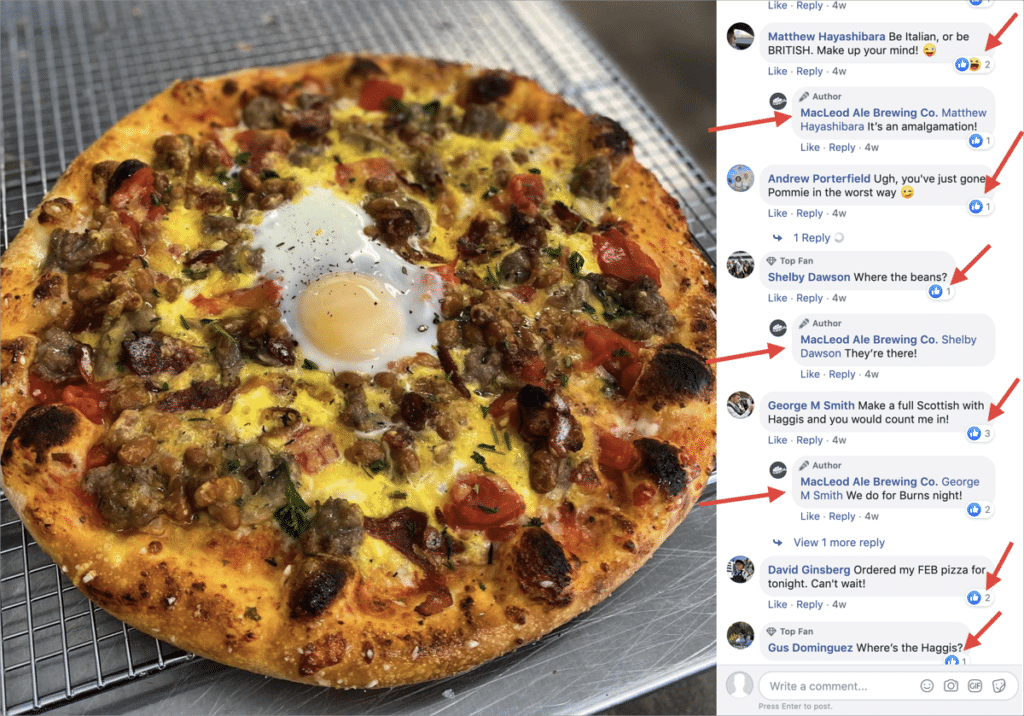
So if you, the owner or marketing manager, reply to each and every person that comments or engages with a piece of content, whether that be on Facebook or as an email reply…
You’re going to increase the likelihood that that person is going to come back and read the next one, the next one, and the one after that.
Got it?
Good.
Because now we go deep.
The Silent S’s: Social Proof, Scarcity, and Storytelling
The Level 4 craft beer marketer goes beyond the obvious and gets strategic.
This is where we bring it full circle…
And align the marketing program with the rest of the brewery business.
We’re calling these three principles (social proof, scarcity, and storytelling) “silent” because although they aren’t immediately obvious but have a profound effect on the impact of the content that you put out.
Incorporating these elements requires more forward planning, timing, and coordination with the taproom and production teams…
But that added level of difficulty pays off big time when it all comes together.
The First S: Social Proof
Right out of Cialdini’s (in)famous book Influence, he outlines that a “potent weapon of influence” is the principle of social proof:
“It states that one means we use to determine what is correct is to find out what other people think is correct… We view a behavior as more correct in a given situation to the degree that we see others performing it. Whether the question is what to do with an empty popcorn box in a movie theater, how fast to drive on a certain stretch of highway, or how to eat the chicken at a dinner party, the actions of those around us will be important in defining the answer.”
And this isn’t just marketing sleight of hand either. It’s also just common sense. As Cialdini writes:
“Usually, when a lot of people are doing something, it is the right thing to do… it provides a convenient shortcut for determining how to behave…”
So whether it’s the reviews that show up when someone pulls up your brewery on Google Maps…
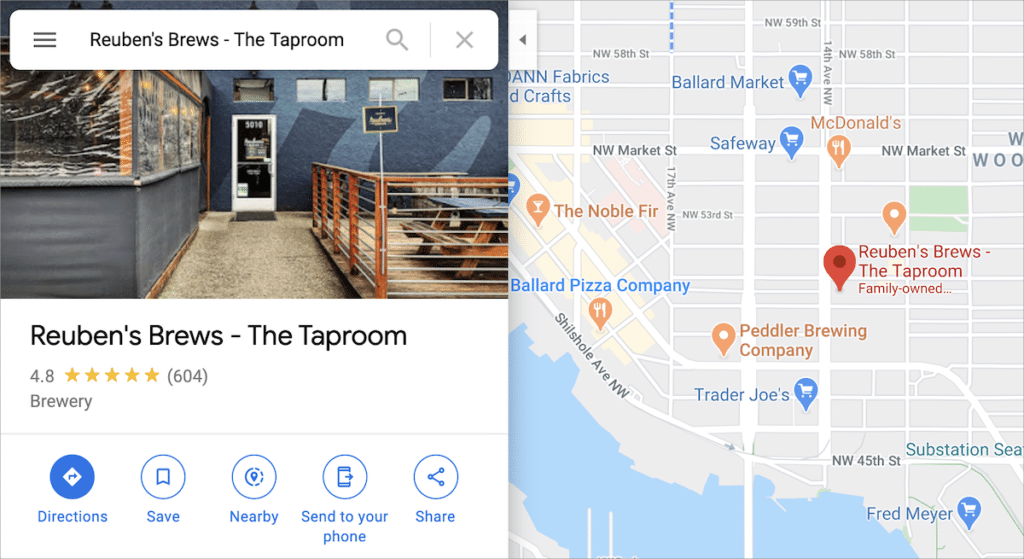
Or the latest critique the Beer Geeks leave on Untappd…
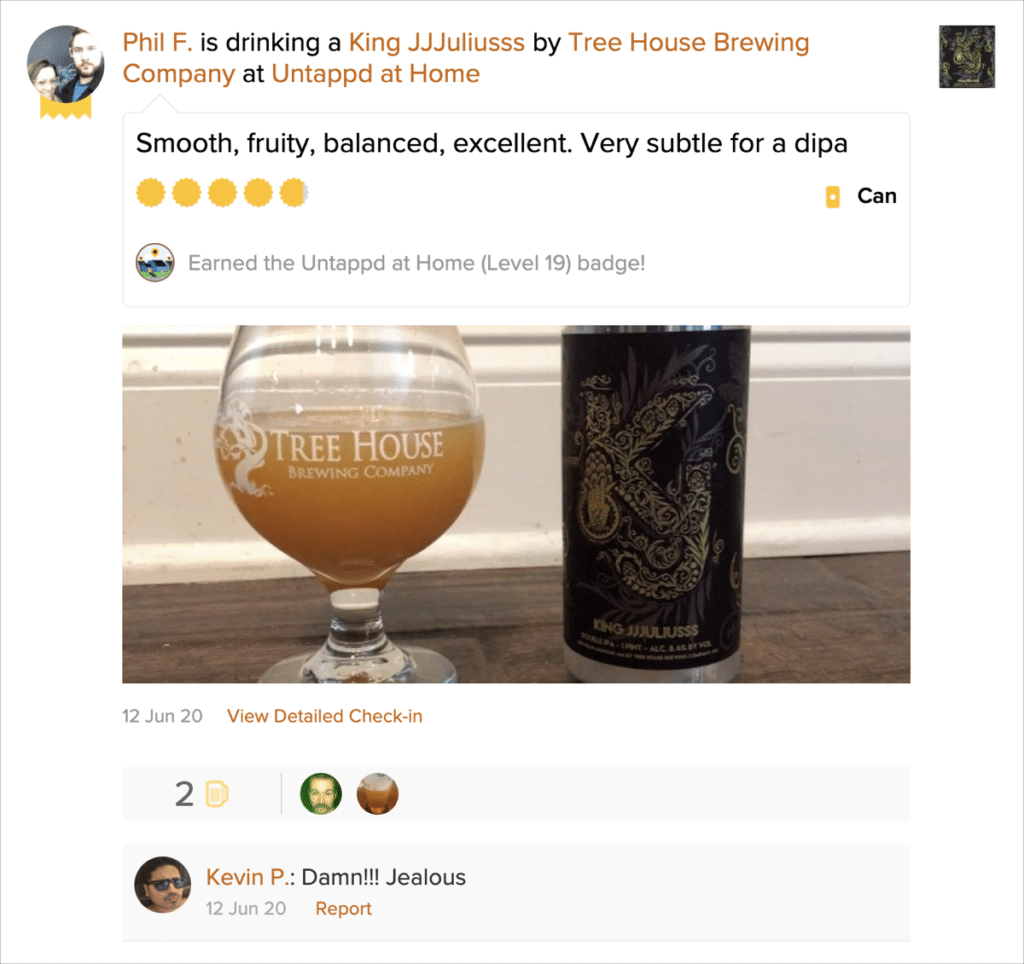
Or just simply the number of enthusiastic comments other taproom patrons leave on Facebook about your latest can release or event…
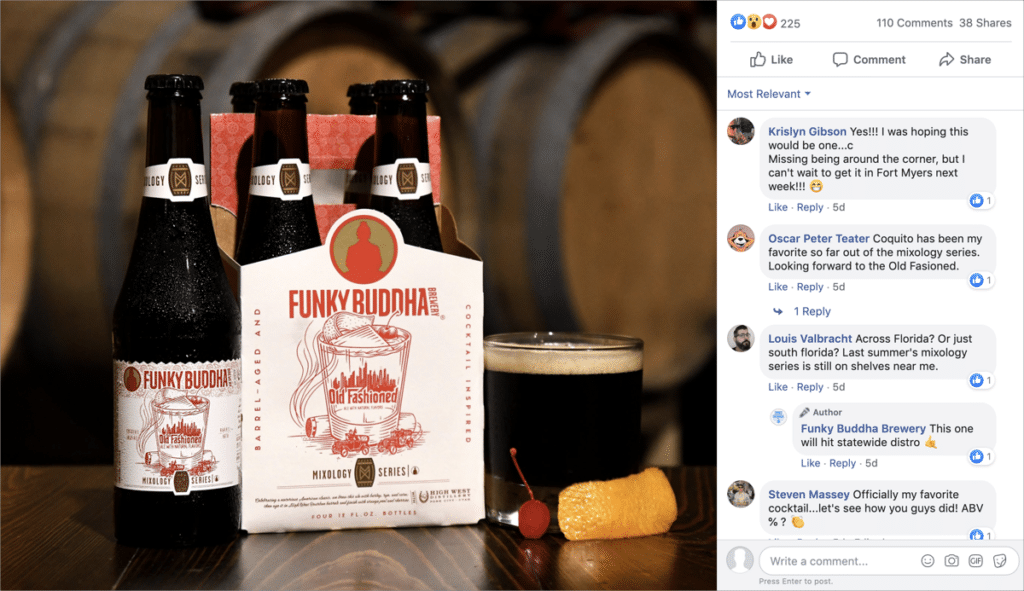
Facilitating more and more proof that your beer is indeed delicious, and your taproom is indeed a killer hang… amplifies the impact of everything you put out online.
And this is especially true for new buyers who aren’t sure what to expect. Again from Influence:
“Without question, when people are uncertain, they are more likely to use others’ actions to decide how they themselves should act.”
In fact, we might have just done that to you just now…
(Why is it that we’re illustrating each of these principles with specific examples from other recognizable breweries? Obvious, yet effective.)
But this isn’t the only “weapon of influence” we can add into the mix…
The Second S: Scarcity
You can’t always get what you want.
The grass is greener on the other side.
Don’t know what you’ve got till it’s gone.
These “common tropes” are common for a reason… because as a general rule:
When there’s less of something valuable, people want it more.
Staying on Cialdini…
“Collectors of everything from baseball cards to antiques are keenly aware of the influence of the scarcity principle in determining the worth of an item. As a rule, if it is rare or becoming rare, it is more valuable… Probably the most straightforward use of the scarcity principle occurs in the ‘limited number’ tactic, when a customer is informed that a certain product is in short supply and cannot be guaranteed to last long.”
I know you’ve done this. You’re probably not doing it enough.
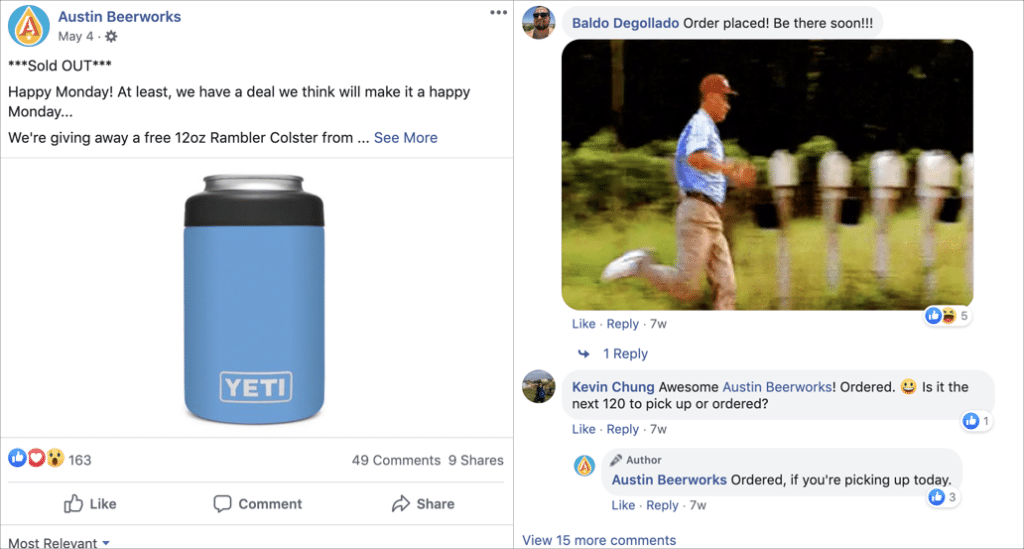
The other component of this principle that Cialdini mentions is this:
“Related to the limited-number technique is the ‘deadline’ tactic, in which some official time limit is placed on the customer’s opportunity to get what the compliance professional is offering.”
To-go ordering windows are a perfect practical example of this as of late… and when incorporated into your marketing can be incredibly effective at driving orders.
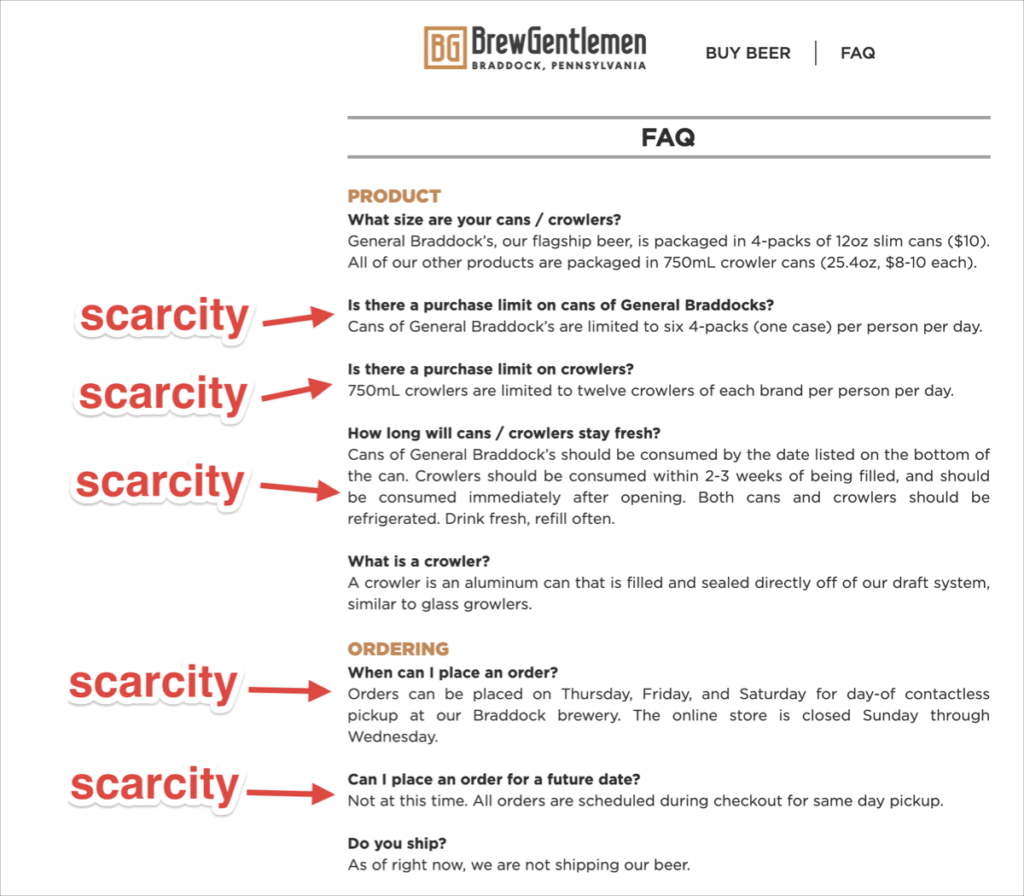
So this is where our recommendation to execute at least one taproom can release per month ties in perfectly.
Don’t just promote the release.
Plan it out so that there’s a limited quantity you know will sell out.
Advertise that.
Then advertise the fact that, yes, you did indeed sell out and that folks should probably get on the ordering sooner next time so that they don’t miss out.
Now THAT’s a recipe for a blowout can release.
Rinse and repeat.
And finally…
The Third S: Storytelling
Back to an insight we published a few months back on Austin Kleon’s Show Your Work, we wrote:
What people are equally (and oftentimes more) interested in is the process. What went into the product. The story behind it. The why. You can only post a variation on the same product photo so many times. But if you share something about your process each day, in a month, and then a year, you’ll have painted a rich context around your liquid and your brand that’s eminently sharable and engaging for your audience.
As effective as product releases, scarcity, and social proof are…
If that’s all you’re putting out, there’s only so much your audience can take before their attention fades.
So in addition to the product-centric marketing we put out, the final (and possibly most important) piece of the puzzle is to tell the story of your brand… and to involve the customers who support you.
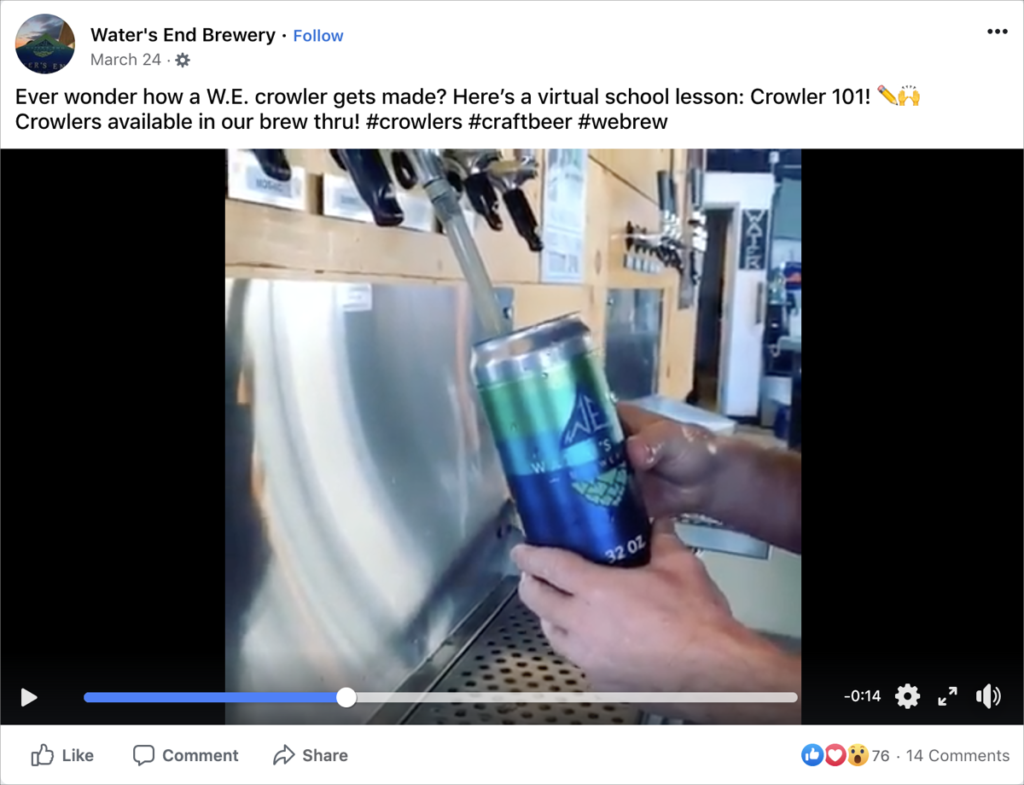
Give your audience a reason to follow along.
Even when they’re not buying.
Because this consistent sense of being a part of something bigger than themselves… a community that can come together around common interests… sets the foundation for a more fruitful long term relationship.
If you get this right:
- You’ll sell more when you do promote your product.
- Your customers will tell their network about your brewery.
- Marketing the business won’t feel like a chore… it’ll feel like an extension of everything you’re already doing.
Pretty cool eh?
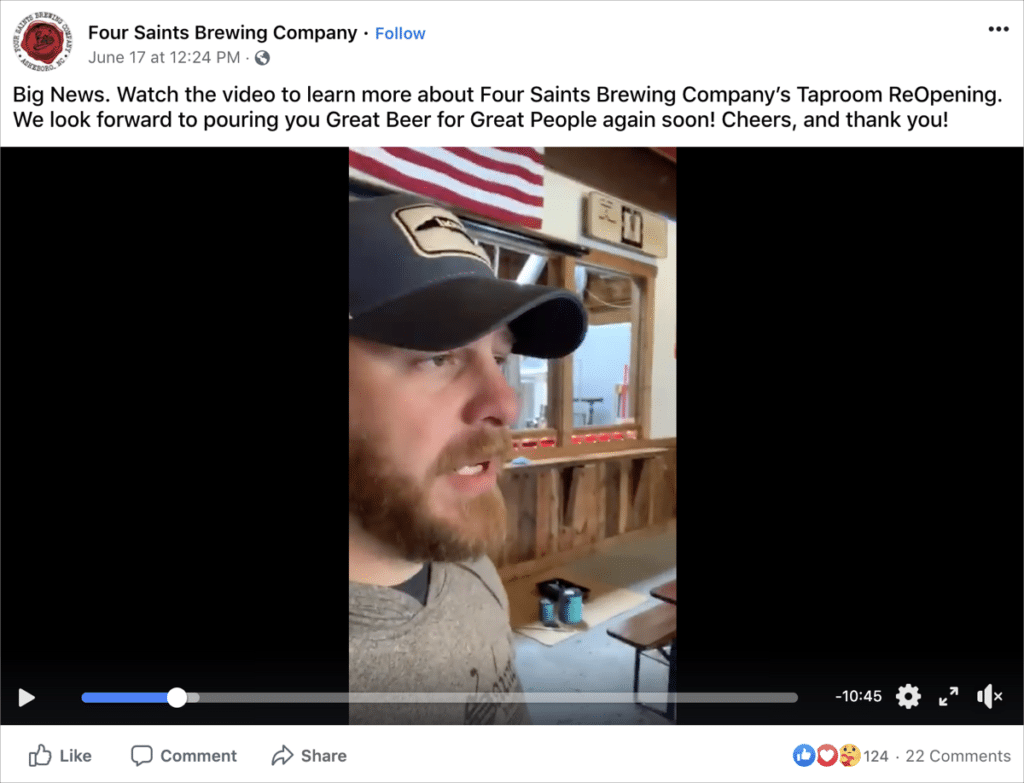
So the question then simply becomes:
How can you share more of your process and tell the story behind your brand?
And that is a winning mindset.
Next Steps If You Want To Grow Your Brewery
Hope you’ve found this useful.
If you’re interested in taking this type of analysis one step further, this is the exact type of strategic guidance we give to our clients, with customize recommendations on how best to take advantage of opportunities like these.
If you’d like to learn more about what this looks like, please do schedule a discovery call with our team.
It’s a straightforward, honest conversation about whether we can help. Regardless if we end up being a fit or not, we love speaking to owners and operators like you, and would be happy to chat.
So reach out. It’s what we’re here for.